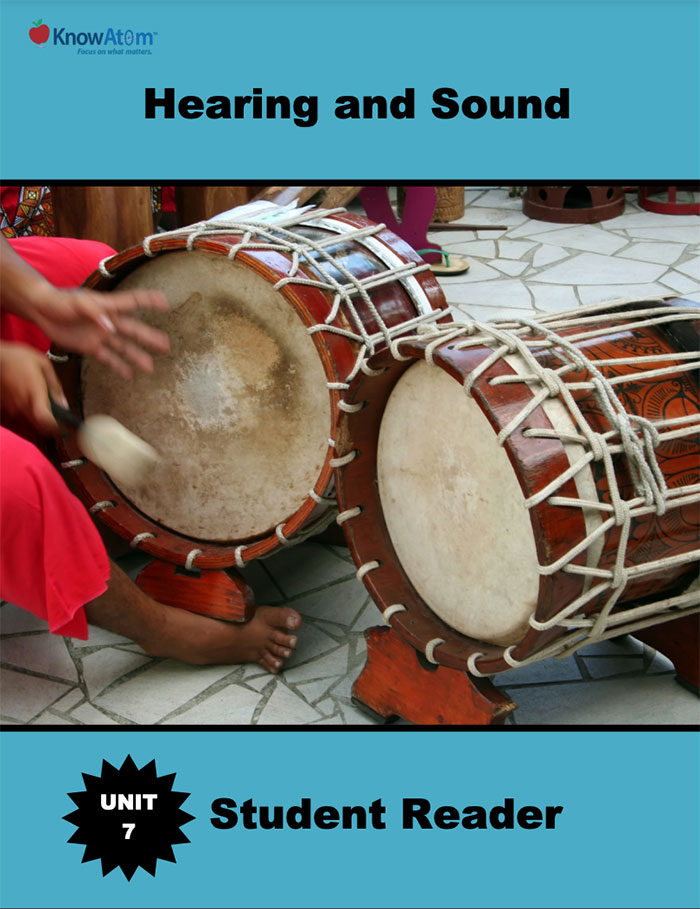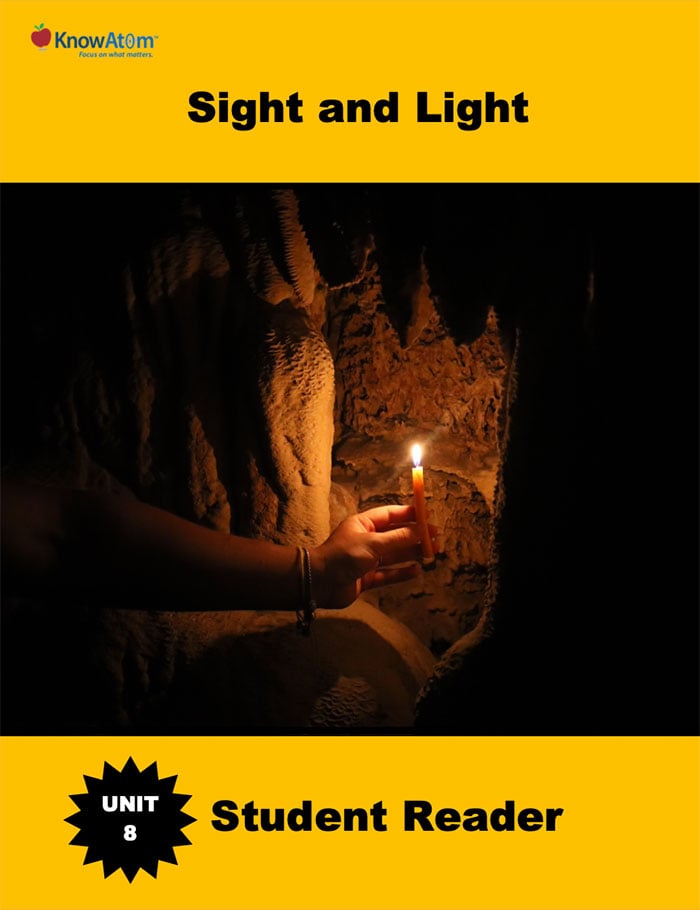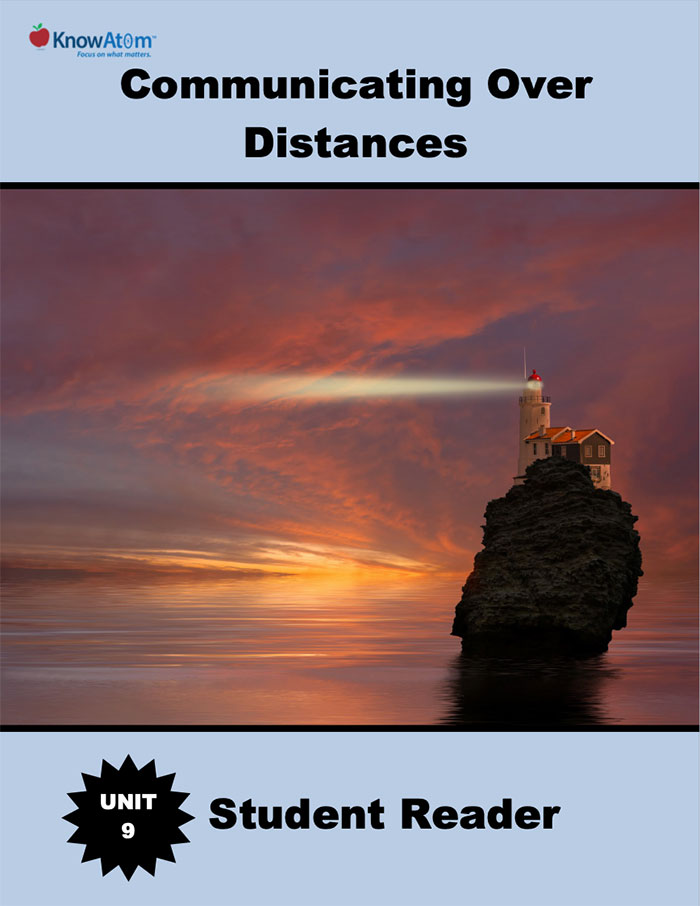
In the last unit, students explored animal behaviors of parents and offspring that help the offspring survive and then designed a dam to stop the flow of water. In this unit, students explore the science phenomena of how animals communicate with one another using sound.

In the last unit, students explored the relationship between vibrations and sound. In this unit, students continue to explore the phenomena of human senses, focusing on how objects can be seen when they are illuminated by a source of light, and how light passes through opaque, transparent, and translucent materials differently. Students then investigate how a beam of light changes when it hits a mirror.

In the last unit, students explore how objects can be seen when they are illuminated by a source of light and how light passes through opaque, transparent, and translucent materials differently. In this unit, students apply what they have learned about light and sound to design a solution that can be used to communicate over a distance.
Standards citation: NGSS Lead States. 2013. Next Generation Science Standards: For States, By States. Washington, DC: The National Academies Press. Neither WestEd nor the lead states and partners that developed the Next Generation Science Standards were involved in the production of this product, and do not endorse it.
